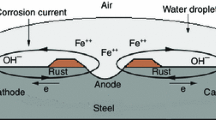Abstract
Based on permeation and double chemical reduction technology, this paper researches the manufacture of Pt-ionic polymer metal composites (IPMCs) and the effect of three types of surface roughening methods on the manufacture and performance of IPMC. The roughening methods include manual polishing, sanding machine polishing, and plasma surface treatment. The appearance and scanning electron microscopy (SEM) features, electro-active deformation and surface resistance characteristics of these IPMC specimens were obtained and compared through specimen tests. The results of the tests indicate that surface roughening technology obviously influences the performance of IPMC. The uniformity and compactness of the metal deposited on the surface and inside the Nafion film are improved by improving surface roughening uniformity. However, the electro-active deformation capability and surface resistance of the specimens decrease at the same time. There is an approximate linear increase relationship between the driving voltage and the bending deformation of the IPMC specimen within a certain voltage range. Under the same specimen dimension, constraints, and driving voltage (3 V), the maximum electro-active bending deformation angles of the specimens are about 60°, 45°, and 15° for manual polishing, sanding machine roughening, and plasma treatment, respectively.
Similar content being viewed by others
References
Cohen Y B, Leary S, Yavrouian A, Oguro K, Tadokoro S, Harrison J, Smith J, Su J. Challenges to the transition of IPMC artificial muscle actuators to practical application. In: Proceedings of Electroactive Polymers Conference. Boston, MA, USA, 1999
Lee S J, Han M J, Kim S J, Jho J Y, Lee H Y, Kim Y H. A new fabrication method for IPMC actuators and application to artificial fingers. Smart Materials and Structures, 2006, 15: 1217–1224
Shahinpoor M, Kim K J. Ionic polymer-metal composites: IV. Industrial and medical applications. Smart Materials and Structures, 2005, 14: 197–214
Shahinpoor M, Kim K J. Ionic polymer-metal composites: I. Fundamentals. Smart Materials and Structures, 2001, 10: 1–15
Kim K J, Shahinpoor M. Ionic polymer-metal composites: II. Manufacturing techniques. Smart Material and Structures, 2003, 12: 65–79
Kim K J, Shahinpoor M. A novel method of manufacturing three-dimensional ionic polymer-metal composites (IPMC) biomimetic sensors, actuators and artificial muscles. Polymer, 2002, 43: 797–802
Vinh K N, Youngtai Y. A novel design and fabrication of multilayered ionic polymer-metal composite actuators based on Nafion/layered silicate and Nafion/silica nanocomposites. Sensors and Actuators B, 2007, 123(1): 183–190
Jeon J H, Yeom S W, Oh I K. Fabrication and actuation of ionic polymer metal composites patterned by combining electroplating with electroless plating. Composites Part A: Applied Science and Manufacturing, 2008, 39(4): 588–596
Andres P, Maarja K, Alvo A. A self-sensing ion conducting polymer metal composite (IPMC) actuator. Sensors and Actuators A, 136(2): 656–664
Cohen Y B, Leary S, Shahinpoor M, Harrison J O, Smith J. EAP actuators for planetary applications. Newport Beach, 1999, 3: 1–61
Wang H X, Yu H H, Li X F, Jiang D S. Preparation and properties of pt-ni/Nafion membrane based electrically driven materials. Journal ofWuhan University of Technology, 2004, 26(12): 5–8 (in Chinese)
Punning A, Kruusmaa M, Aabloo A. Surface resistance experiments with IPMC sensors and actuators. Sensors and Actuators A, 2007, 133: 200–209
Shahinpoor M, Kim K J. The effect of surface-electrode resistance on the performance of ionic polymer-metal composite (IPMC) artificial muscles. Smart Materials and Structures, 2000, 9: 543–551
Author information
Authors and Affiliations
Corresponding author
Rights and permissions
About this article
Cite this article
Jin, N., Wang, B., Bian, K. et al. Performance of ionic polymer-metal composite (IPMC) with different surface roughening methods. Front. Mech. Eng. China 4, 430–435 (2009). https://doi.org/10.1007/s11465-009-0053-6
Received:
Accepted:
Published:
Issue Date:
DOI: https://doi.org/10.1007/s11465-009-0053-6




